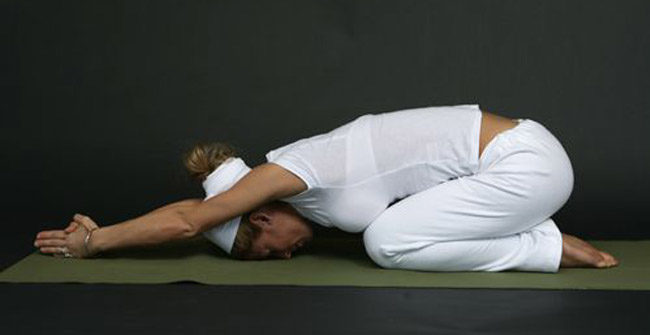Breathe yoga – Obsessive-compulsive disorder is a neuropsychological disorder characterized by uncontrollable, intrusive thoughts. These obsessive thoughts, images and impulses are not only illogical but disturbing to the patient, who feels powerless to stop them. Those with OCD experience high levels of distress and anxiety, largely because they are aware that their obsessive thoughts are irrational.
Sufferers of OCD attempt to relieve the anxiety associated with obsessive thoughts by performing compulsions, or repetitive, often ritualized behaviors; the classic example is that of the patient who washes his hands compulsively to stave off the fear of disease. However, the specific fears associated with compulsive behaviors vary widely and are often incredibly personal. Some patients may even lack specific fears but instead fear unspecified but no less horrible disasters.
The relief provided by compulsive behavior is short-lived; obsessive thoughts, and the anxiety they cause, are certain to return. Without treatment, the compulsions can become so time-consuming that, ultimately, they contribute to the patient’s anxiety. In the short term, psychologists use a combination of medication, cognitive behavioral therapy, and exposure and response prevention therapy to help patients cope with obsessive thoughts and anxiety. In the long term, stress and anxiety management are crucial to living with the condition; meditation and breathe yoga techniques can help sufferers manage their OCD anxiety.
How Breathe Yoga Meditation Calms the Mind
Breathe yoga is a form of physical exercise that has developed over thousands of years. Yoga asanas, or poses, strengthen and stretch the muscles, reducing physical tension, and leading to increased strength, flexibility and feelings of enhanced well-being. Breathe yoga mantras, or chants, help train and focus the mind.
Private yoga classes can help the OCD patient learn to recognize obsessive thought patterns, a key component of cognitive-behavioral therapy. Yoga asanas and relaxation techniques provide anxiety relief.
A yoga practice that includes restorative poses, inversions and forward bends calms the nervous system. Child’s pose, seated forward bend and seated head-to-knee pose have known calming effects. Inversions, like downward-facing dog, standing forward bend, shoulder stand and plow pose temporarily increase blood flow to the head, improving circulation and lowering heart and respiratory rates.
Private yoga classes, asanas and relaxation techniques depend on breath control. During periods of intense anxiety, breathing becomes shallow, restricted and rapid; rapid breathing exacerbates nervous agitation and anxiety. Pranayama, or yogic breathing exercises, deepen and slow the breath to calm the nerves and soothe anxiety. With regular yoga practice, OCD patients can manage anxiety with breath control.
The Three-Part Breath: A Treatment for Anxiety
The three-part breath is an easy pranayama practice. The exercise can be performed while seated or while lying down. Choose a position that allows you to relax completely while keeping your spine straight.
Begin by observing the breath. Don’t try to control it. Focus on your breath; allow any thoughts that may enter your mind to pass through unimpeded. Do this until you feel relaxed and focused.
To begin the three-part breath, inhale deeply through the nose. Fill your abdomen with your breath. Exhale through the nose; with each exhale, draw the navel inward, toward the spine. Repeat for five breaths.
With the next inhale, fill your abdomen, then allow the breath into the ribcage. Expand your ribcage as much as possible. On the exhale, release the air first from the ribcage, then from the abdomen, pulling your navel inward. Repeat five times.
On the next inhale, fill the abdomen and ribcage, then allow the breath into the upper chest, all the way up to the collarbone. On the exhale, expel the breath from the upper chest, then from the ribcage, and finally from the abdomen, remembering to draw the navel inward. Continue at your own pace; the three parts of the breath should follow one another smoothly. Perform ten complete rounds of the three-part breath daily.
Breathe Yoga Therapy Offers Hope to OCD Patients
Obsessive-compulsive disorder is an anxiety disorder characterized by intrusive, disturbing thoughts or obsessions. Patients feel powerless to control their irrational obsessions, which produce high levels of anxiety. They attempt to relieve their anxiety by performing compulsive behaviors but said anxiety only increases as obsessive thoughts become more powerful and compulsions more time-consuming.
Yoga asanas and relaxation techniques can help patients manage anxiety over the long term, once cognitive behavioral therapy and exposure and response prevention therapy have ended. Yoga mantras train and focus the mind, while asanas strengthen and stretch the muscles to relieve stress and tension. With dedicated and prolonged practice, yoga therapy can reduce intrusive thoughts and compulsive behaviors, making obsessive-compulsive disorder a much more livable condition.
- Why Blockchain could be end of high fees, delays in global payments - January 17, 2025
- Abridge AI: Silent scribe transforming healthcare interactions - January 5, 2025
- What makes quantum AI a game-changer for technology - December 25, 2024
- How businesses must adapt to evolving cyber threats in 2025 - December 4, 2024
- How vaping stiffens blood vessels and strains lungs: Study - November 26, 2024
- OpenAI Codex or Google Codey? Finding the perfect AI for your code - November 18, 2024
- What Google’s Project Jarvis means for future of digital interaction - October 28, 2024
- 11 tips for creating engaging ad content - July 8, 2024
- Meta Quest’s new update: Leap towards enhanced multitasking - July 8, 2024
- How AI enhances your pixel experience - July 7, 2024




